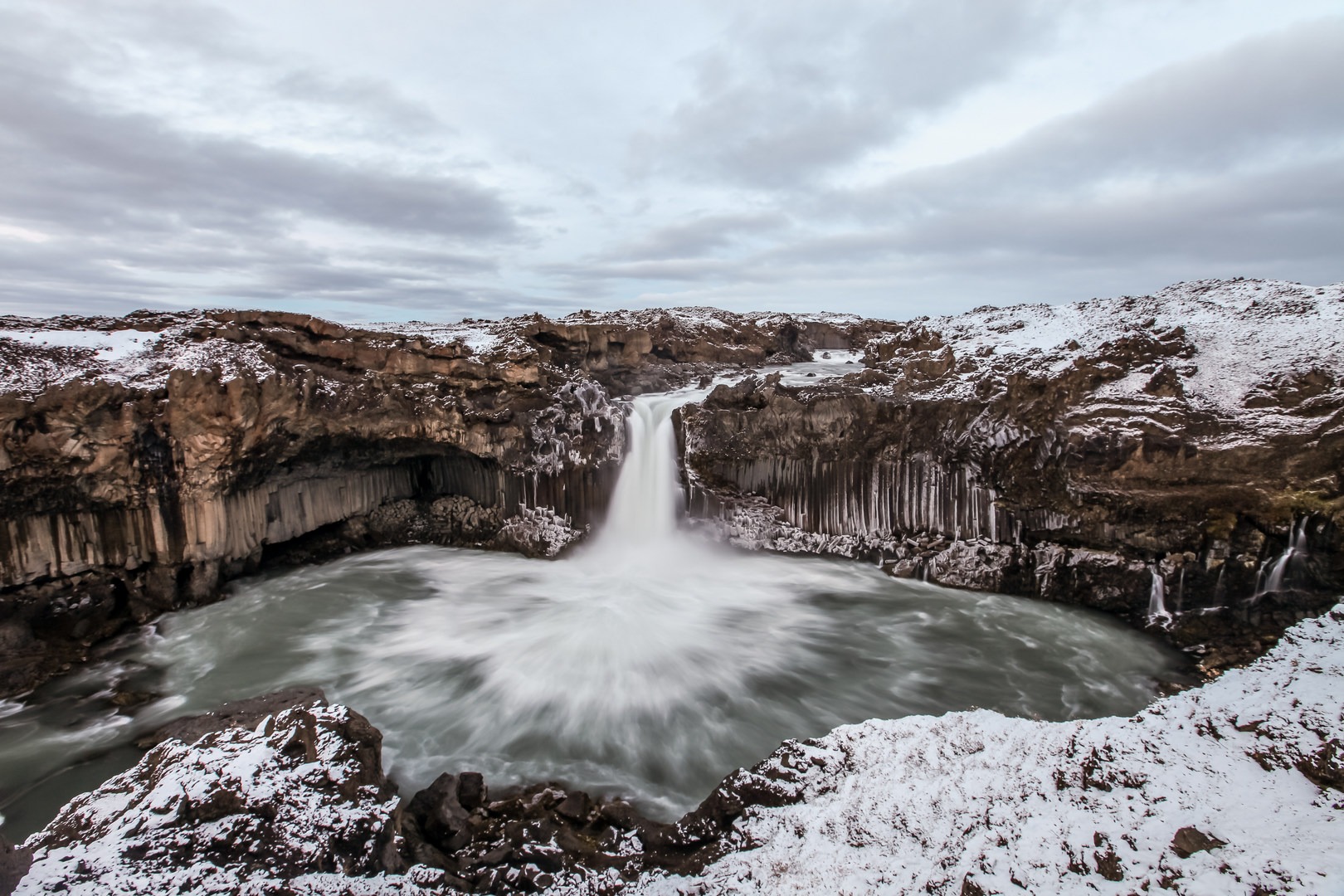You are here
Aldeyjarfoss is a 20-meter (66-foot) waterfall on the edge of the Icelandic Highlands that is surrounded by an astounding geological amphitheater of basalt columns. It is located in the northeastern region of the country off of the rugged Sprengisandur Route to the interior. While most vehicles can traverse this unpaved road in the summer, road and weather conditions should definitely be checked before making a winter traverse. It’s about 93 kilometers (58 miles) from Akureyri and takes approximately 1.5 hours to drive there. The last 6 kilometers (3.7 miles) requires a four-wheel-drive vehicle, or you can choose to park your car and hike to the falls. The hiking path is very rocky and takes you along a steep hillside with potentially dangerous drops in many places. Watch your step and enjoy this geological phenomenon that was created several thousands of years ago.
From Route N1, the “Ring Road,” turn south onto Route 842 near Goðafoss, a waterfall with a story that traces back to Iceland’s roots in Christianity. This gravel road will traverse the lifeless terrain of Bárðardalur, the surrounding valley, and take you 30 kilometers (19 miles) to Sprengisandsleið F26. If you have a two-wheel-drive vehicle, park here and hike the remaining distance. Once you pass the Mýri farm and reach the gate, you are nearly there. (Please close the gate behind you.) A sign indicates a river crossing that is after the waterfall if you decide to continue on F26 to the highlands. There is a parking area with an information sign and toilets. Several tour buses are likely to be present despite the remote location. From here, the walk to the waterfall takes about 15 minutes.
Water pouring over Aldeyjarfoss originates from Vatnajökull, Iceland’s largest glacier, and flows down the Skjálfandafljót, one of Iceland’s longest rivers. It flows through the Bárðardalur Valley and eventually empties into the Skjálfandi Bay to the north. On its way, the water cuts through the massive Suðurárhraun, or Frambruni, lava field exposing the underlying layers of ash and rock that are a testament to the country’s volcanic history. While this waterfall is much shorter than many others throughout Iceland, the black columnar basalt columns decorating its sides are what make it such a special spot to visit. This natural architecture was originally formed by the eruptions of Trolladyngja and Fjarborg over 9,500 years ago. The columns form when lava slowly cools and fractures in hexagonal polygons perpendicular to the direction of magma flow. Their bent structures indicate that they were moving as the rock hardened. An additional thick blanket of solidified lava caps the columns. Photographers love the natural contrast of these stunning black vertical structures against the white water of the falls, especially embellished by ice and snow in the winter.
Aldeyjarfoss is one of several impressive waterfalls on the Skjálfandafljót River including Ingvararfoss, Hrafnabjargafoss, Barnafoss and the most famous, Goðafoss. Buses negotiating the Sprengisandur crossing between Rekyjavík and Akureyri make it a point to stop here. While it may take a few hours and a good pair of hiking boots to reach, it is well worth the trip. Svartifoss is another waterfall at the southern end of Vatnajökull National Park; it shares a similar geology but has has straighter and more defined columns, and it is also worth exploring.
Logistics + Planning
Current Weather: Powered by Dark Sky


































Comments
Sign In and share them.